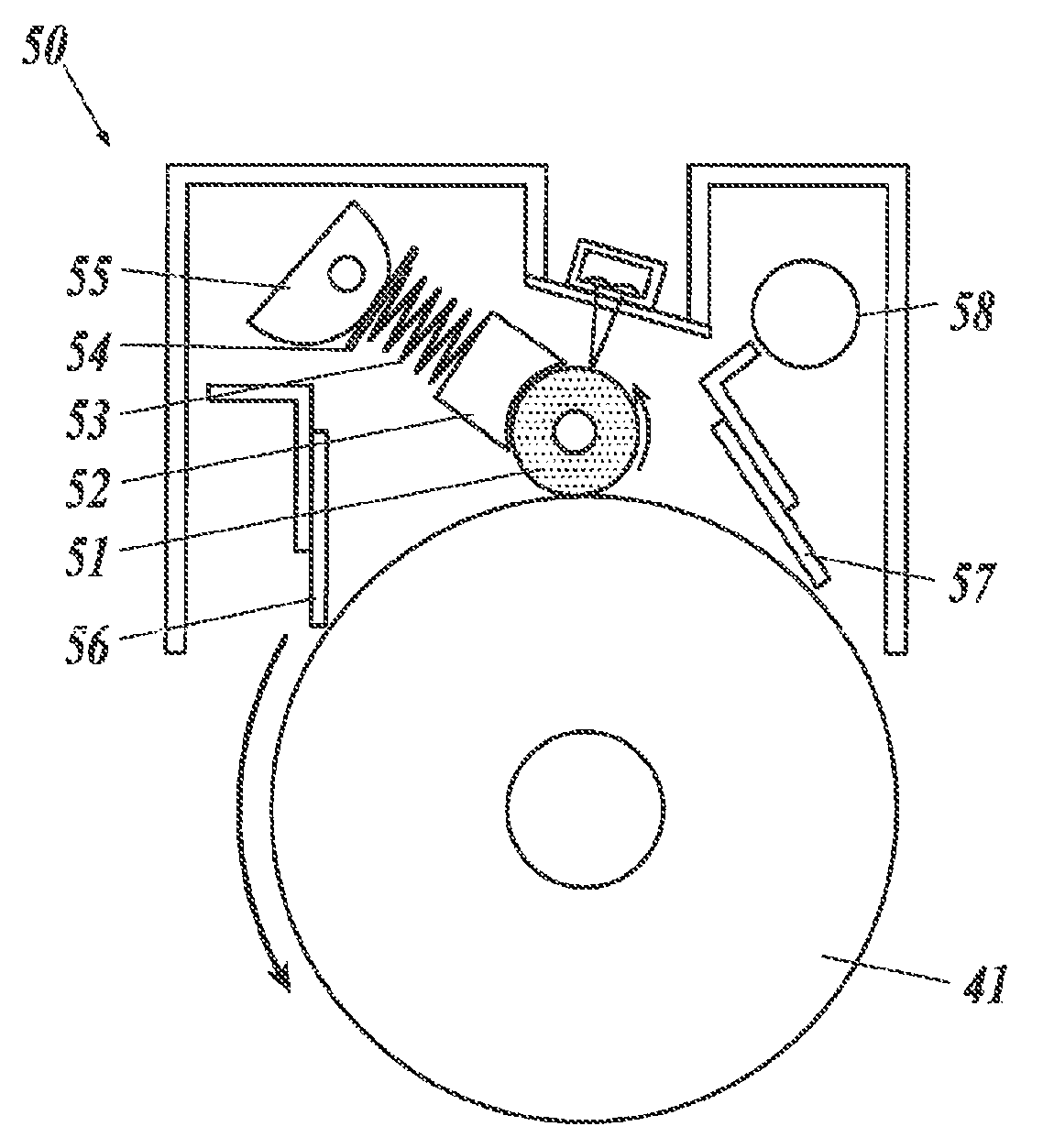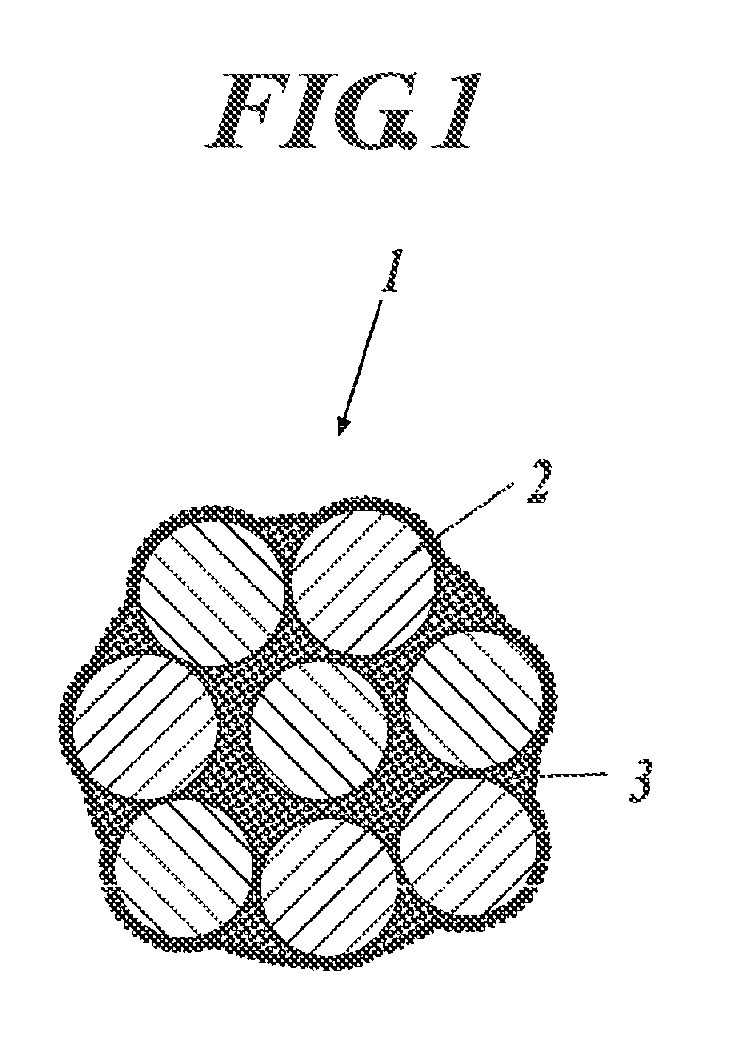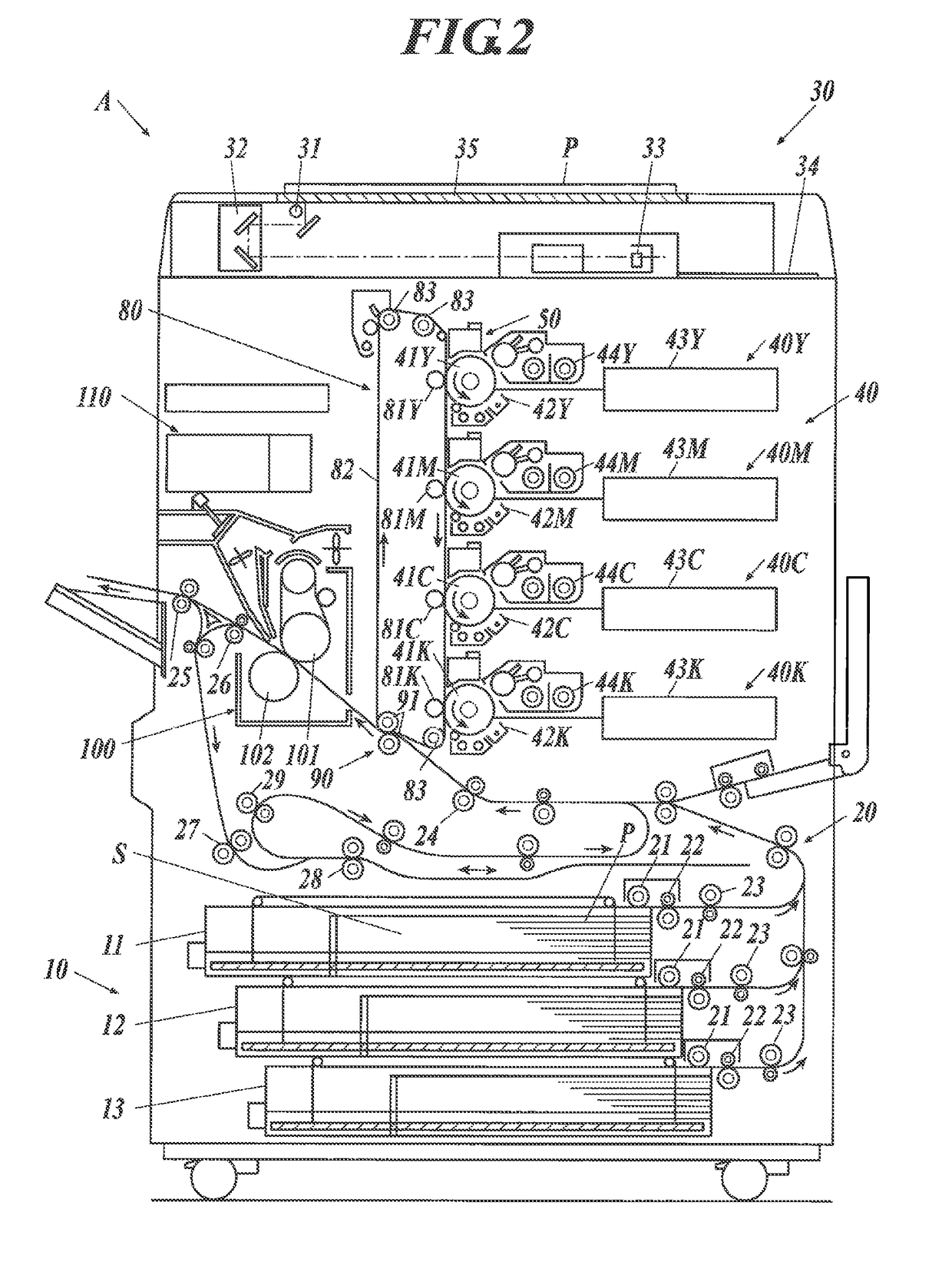Image forming process
a technology of image forming and forming blades, applied in the field of electrophotography, can solve the problems of large frictional force, uneven charge abraded so as to prevent the wear of cleaning blades or the surface of electrostatic latent image carriers, prevent the defect of images, and improve the quality of images over a long time
- Summary
- Abstract
- Description
- Claims
- Application Information
AI Technical Summary
Benefits of technology
Problems solved by technology
Method used
Image
Examples
examples
[0263]The present invention will now be described in detail by way of non-limiting Examples. In Examples, “parts” and “%” are on the mass basis, unless otherwise specified.
Preparation of Silica-Polymer Composite Nanoparticles
Process of Preparing Silica-Polymer Composite Nanoparticles 1
[0264]A Ludox AS-40 colloidal silica dispersion (W.R. Grace & Co., number average primary particle diameter: 25 nm, BET SA: 126 m2 / g, pH: 9.1, silica content: 40 mass %) (18.7 g), deionized water (125 mL), and a first hydrophobic agent methacryloxypropyltrimethoxysilane (15.0 g) (CAS #2530-85-0, Mw: 248.3) were placed in a 250 mL four-necked round-bottomed flask equipped with an over-head stirring motor, a condenser, and a thermocouple. The mass ratio MMON / Msilica was 2.0:1.
[0265]The reaction mixture was heated to 65° C. While the mixture was being stirred at 120 rpm, the nitrogen gas was bubbled into the mixture for 30 minutes. After three hours, a solution (10 mL) of a radical initiator 2,2′-azobisis...
examples 1 to 14
, Comparative Examples 1 to 5
[0306]A lubricant applicator including a lubricant applicator shown in FIG. 3 was installed in a digital copier “bizhub PRO C450” (available from KONICA MINOLTA, INC.). Developers [Bk-1] to [Bk-19] containing Toners (Bk-1) to (Bk-19), respectively, were used to perform the following print test for evaluation of uneven charge and wear of the photoreceptor. The lubricant used was zinc stearate.
Evaluation of Uneven Charge
[0307]Under an environment at normal temperature and normal humidity (temperature: 20° C., humidity: 55% RH), size A4 plain paper was used as an image support, a halftone image having an absolute reflection density of 0.50 (referred to as “initial image”) was printed on the first or initial sheet. After an image having a coverage of 5% was printed on 50000 sheets in an intermittent mode, a halftone image having a reflection density of 0.50 (referred to as “image after 50000 prints”) was printed on one sheet. In each of the initial image and...
PUM
| Property | Measurement | Unit |
|---|---|---|
| number average primary particle diameter | aaaaa | aaaaa |
| number average primary particle diameter | aaaaa | aaaaa |
| number average particle diameter | aaaaa | aaaaa |
Abstract
Description
Claims
Application Information
 Login to View More
Login to View More - R&D
- Intellectual Property
- Life Sciences
- Materials
- Tech Scout
- Unparalleled Data Quality
- Higher Quality Content
- 60% Fewer Hallucinations
Browse by: Latest US Patents, China's latest patents, Technical Efficacy Thesaurus, Application Domain, Technology Topic, Popular Technical Reports.
© 2025 PatSnap. All rights reserved.Legal|Privacy policy|Modern Slavery Act Transparency Statement|Sitemap|About US| Contact US: help@patsnap.com



